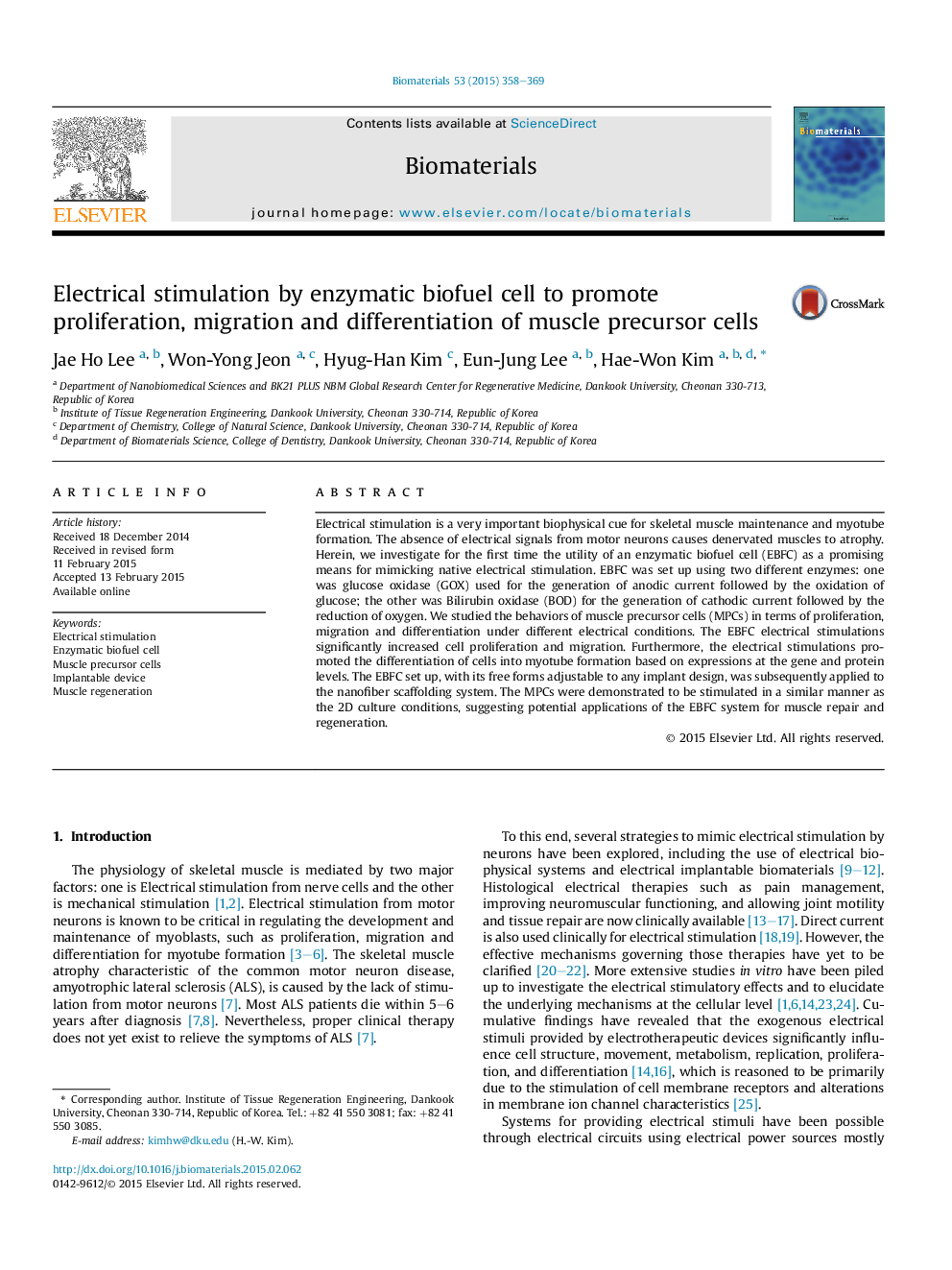| Article ID | Journal | Published Year | Pages | File Type |
|---|---|---|---|---|
| 6485790 | Biomaterials | 2015 | 12 Pages |
Abstract
Electrical stimulation is a very important biophysical cue for skeletal muscle maintenance and myotube formation. The absence of electrical signals from motor neurons causes denervated muscles to atrophy. Herein, we investigate for the first time the utility of an enzymatic biofuel cell (EBFC) as a promising means for mimicking native electrical stimulation. EBFC was set up using two different enzymes: one was glucose oxidase (GOX) used for the generation of anodic current followed by the oxidation of glucose; the other was Bilirubin oxidase (BOD) for the generation of cathodic current followed by the reduction of oxygen. We studied the behaviors of muscle precursor cells (MPCs) in terms of proliferation, migration and differentiation under different electrical conditions. The EBFC electrical stimulations significantly increased cell proliferation and migration. Furthermore, the electrical stimulations promoted the differentiation of cells into myotube formation based on expressions at the gene and protein levels. The EBFC set up, with its free forms adjustable to any implant design, was subsequently applied to the nanofiber scaffolding system. The MPCs were demonstrated to be stimulated in a similar manner as the 2D culture conditions, suggesting potential applications of the EBFC system for muscle repair and regeneration.
Keywords
Related Topics
Physical Sciences and Engineering
Chemical Engineering
Bioengineering
Authors
Jae Ho Lee, Won-Yong Jeon, Hyug-Han Kim, Eun-Jung Lee, Hae-Won Kim,
